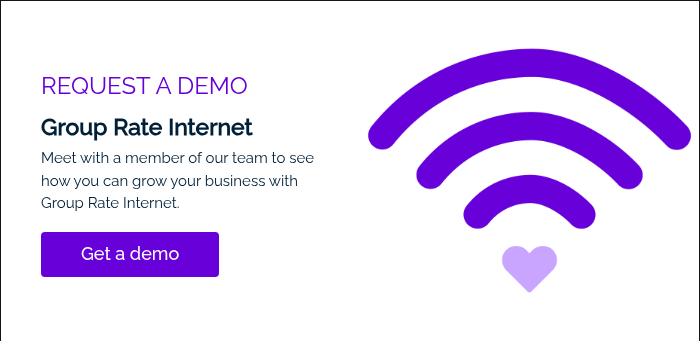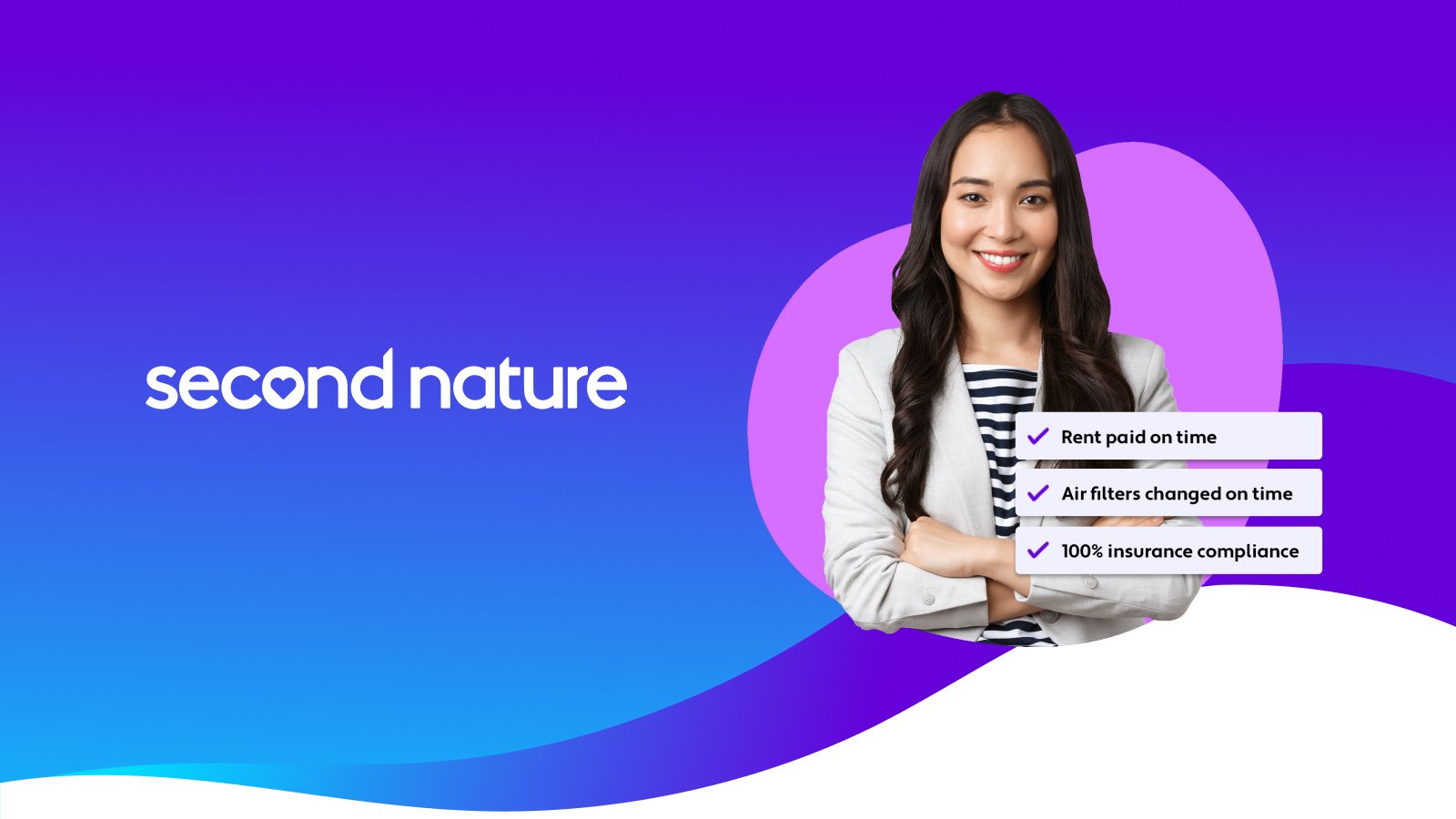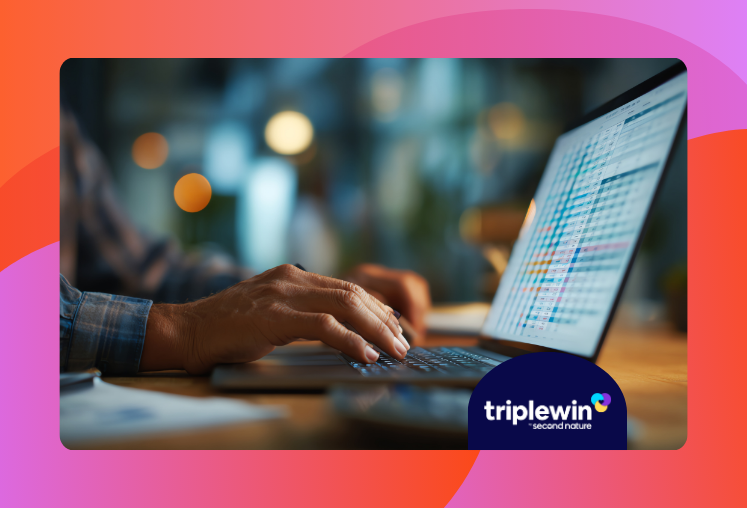Resident experience is the sum total of interactions and experiences a resident has with their property manager and the rental property itself – from the initial lease signing to the eventual move-out and all the day-to-day living moments in between.
It encompasses everything from the quality of services provided, like timely maintenance and communication, to the overall livability and enjoyment of the property. In essence, it's how a resident perceives their rental journey in its entirety.
Excellent resident experience management is the mark of a top-tier property management company. It boosts resident retention, satisfaction, and outcomes.
In this article, we delve into nine actionable ways to enhance the resident experience in your single-family rental properties, fostering stronger relationships and, ultimately, achieving greater success in property management.
Read the full report! If you haven’t already heard, we recently published our first-ever State of Resident Experience Report, which explores resident experience management: the pivotal touchpoints between a resident and a property manager. The report draws fresh insights from the SFR property management industry and explores the three top factors impacting resident experience right now.

1. A Seamless move-in experience
Ah, the move-in process – the start of a beautiful friendship between the resident and the property manager. It's a bit like a first date – you're setting impressions that could make or break the relationship.
A seamless move-in experience is your chance to roll out the red carpet for your new residents, showing them they've made the right choice (and have definitely swiped right on the best property around).
And guess what? A resident who's had a great move-in experience is a happier one. Happier residents stay longer, pay on time, take care of the property, and make positive recommendations.
Resident experience examples: How to build a perfect resident move-in experience
Here's how to ensure your move-in experience hits all the right notes.
- Clear Communication: Provide detailed information about the new home and move-in process, including key collection, utility setup, and property rules. Who's handling utilities? Where's the best pizza joint nearby? Share all the important details.
- Welcome Packet: Roll out the resident red carpet with a welcome packet. Not only does it have all the must-know info, but it also says, "Hey, we're glad you're here." Include essential information such as garbage collection days, rules, important contact numbers, and a neighborhood guide.
- Property Readiness: Nothing dampens spirits like a flickering light on the first day. Ensure the property is thoroughly cleaned, all appliances are working, and any previous damages are repaired before the move-in date.
- Efficient Paperwork: Let's face it, nobody loves paperwork. Make it painless with easy online forms and digital sign-offs.
- Personal Touch: A little welcome gift can go a long way. It's like saying, "Welcome home, neighbor. We're going to rock this thing." Second Nature’s Resident Benefits Package includes a Move-in Concierge to ensure the process is seamless and personal.
2. Responsive communication
In the symphony of successful property management, responsive communication is your melody. It's the backbone of a harmonious resident experience, and when done right, it can elevate your property management status from “forgettable” to “virtuoso.” The sooner you respond to your resident’s queries or concerns, the more they'll feel valued. And a valued resident is a happier resident.
Remember, good communication isn’t just about speed—it’s about clarity too. It's like being a great tour guide in the bustling city of property management—clear, informative, and always ready to help.
Ways to improve communication with your residents
Let's explore some best practices:
- Multiple Channels: Embrace the digital age! Offer various communication channels like emails, text messages, phone calls, and even a resident portal. Variety is the spice of life, right?
- Be Proactive: Don’t wait for your residents to reach out with issues. Regularly check in and ask if they need anything.
- Set Expectations: Be clear about your communication protocols. Let your residents know when and how they can reach you and when they can expect a response. No one likes to be left on read!
- Listen Actively: When your residents speak, lend them your ears! Show understanding and work collaboratively towards solutions. It's a two-way street, after all.
- Be Respectful: Always communicate with respect and professionalism. Treat your residents the way you’d want to be treated – it’s the golden rule, even in property management!
3. Better maintenance services with quick response times
Think of maintenance services as the superheroes of the property management world. When done right, they swoop in to save the day, ensuring minor issues don't escalate into supervillain-sized problems.
Quick response times? That's your superhero's super speed. The quicker the response, the happier your resident, and the safer the day.
How to improve maintenance services and response times
Here's how to get your property management cape (sorry) flapping in the wind:
- 24/7 Maintenance Line: Offer a dedicated line for maintenance requests. To belabor our superhero analogy, it’s like having a bat signal for your tenants – they know help is just a call away.
- Online Reporting: Make it easy for tenants to report issues. An online system can keep things organized and ensures no request gets lost in the shuffle.
- Prompt Follow-up: Act swiftly on maintenance requests. Even if you can't fix the issue immediately, acknowledging the request and providing a timeline can ease the resident's mind.
- Regular Inspections: Regular property inspections can help you catch potential issues before they become major headaches. It's all about that ounce of prevention!
- Trusted Vendors: Work with reliable and professional vendors who provide quality work in a timely manner. They're your sidekicks in maintaining property harmony.
4. Resident surveys and active feedback gathering
Resident surveys and feedback gathering are your property's annual check-up, a key health indicator for your relationship with residents.
These invaluable tools allow you to take the pulse of resident satisfaction, uncover hidden issues, and celebrate what's working well. When residents see their feedback being valued and acted upon, it creates a sense of involvement and community, enhancing their overall living experience and driving resident retention.
Importantly, active feedback gathering shows your residents that their voices matter. It instills a sense of ownership and care that can often lead to better property care and longer tenancies.
How to turn resident feedback into a better resident experience
Here are some ways to champion feedback in your property management:
- Regular Surveys: Don't just wait for the annual survey. Keep the feedback coming in regularly, like a monthly check-in or a quick poll after a service call. It's like catching up over a virtual cup of coffee – relaxed and informative.
- Feedback Boxes: Consider setting up a digital feedback box where residents can drop their thoughts, ideas, or concerns anonymously. Think of it as your modern suggestion box.
- Act on Feedback: Here's the real deal – taking action. Show your residents that their feedback isn't just being heard, it's being actioned.

5. Resident rewards
Resident Rewards are a huge factor in resident retention and satisfaction. Rewards make residents feel appreciated and have proven to incentivize habits like on-time payments and better care for the property. Perks like this can significantly boost resident satisfaction, increase lease renewals, and even stimulate referrals. It's a win-win all around!
For multifamily and apartment community managers, that might look like community-focused programs. For single-family property managers, we’ve got some other tips.
Second Nature’s Resident Benefits Package includes a robust resident rewards program.
How to improve the resident experience with resident rewards
Here's how you can sprinkle some rewarding magic into your resident experience:
- On-Time Rent Rewards: Create a system that rewards residents for consistently paying their rent on time. It could be a small discount or a gift card to a local coffee shop.
- Longevity Rewards: Celebrate lease renewals or long-term residents. A gift, a discount, or even a personalized note can make your residents feel valued for their loyalty.
- Referral Rewards: Turn your residents into ambassadors! Offer a discount or a bonus for any referral they make that signs a lease.
- Surprise Rewards: Keep the excitement alive with occasional surprise rewards. It could be as simple as a movie ticket or a voucher for a free car wash.
6. Incentive programs
Incentive programs are the next level of resident engagement that professional PMs offer. They can positively influence resident behavior, promote a sense of belonging, and even enhance your property's appeal to prospective residents.
When residents feel that their good habits (like timely rent payments) are being recognized or they're being offered valuable services (like credit reporting or identity protection), it builds loyalty and satisfaction. It's like saying, "We're in this together, and we've got your back!"
How incentive programs can boost the resident experience
Here's how to serve up a great menu of incentives for your residents:
- Credit Reporting: Offer a program that reports timely rent payments to credit bureaus. It's a win-win: they pay their rent on time, and they build their credit!
- Identity Protection: In a world where digital safety is paramount, offering identity protection services can be a powerful incentive. It's like providing an invisible, protective bubble around your residents.
- Rent Discount for Referrals: Encourage residents to become your ambassadors. Offer a rent discount or a gift for successful referrals. It's like having your very own fan club.
- Early Payment Incentives: Reward residents who pay their rent well before the due date. It could be a small discount or a token gift, but it makes them feel appreciated.
- Rewards for Green Habits: Encourage residents to adopt environmentally friendly habits, like recycling or energy conservation, and offer incentives for their green efforts. This can really help in SFR when you don’t have the same level of control as PMs managing an apartment building.
7. Support tools
Support services work behind the scenes, often unnoticed, but they play a crucial role in streamlining the resident experience. From filter delivery subscriptions to online payments, these services add a layer of convenience and assurance for your residents.
Integrating support services into your property management strategy can not only elevate resident satisfaction but also reduce your workload. It's like having a friendly assistant who's always ready to lend a hand, both to you and your residents.
How to create support services that add convenience to your resident experience
Here are a few ways you can amplify your resident experience through support services:
- Filter delivery subscription: Offering a filter delivery service for your residents ensures their HVAC system is always protected. It reduces your maintenance issues and costs and ensures they have a safe living environment. Second Nature’s filter delivery reduces resident and PM costs by hundreds of dollars a year.
- Internet service: 98% of residents are already paying for internet service. By providing it right alongside your lease, you can decrease costs for your residents and simplify their lives. Group Rate Internet provides gigabit-speed service at a lower price than residents can get on their own, saving them money on something they're already paying for.
- Online rent payment: Providing an easy-to-use online portal to process and automate rent payments and lease renewals adds a layer of convenience for you and your residents.
- Maintenance request portal: An online system for maintenance requests helps keep track of issues and ensures timely response. It's like having a 24/7 maintenance desk at their fingertips.
- Digital notifications: Use email or SMS notifications to keep residents updated about important things like maintenance schedules, community events, or changes in property rules. Proptech solutions can help with digital support.
- Resident portal: A comprehensive resident experience platform where tenants can access services, find information, and connect with management can significantly enhance the overall resident experience.
8. Concierge services
Concierge services are the above-and-beyond offerings that can truly set your property apart from the rest. This personalized attention can transform the often stressful processes into a smooth and enjoyable experience.
How concierge services help with resident experience
Here are some other examples of concierge services:
- Move-in Concierge: Who doesn’t want a personal assistant during the often chaotic time of moving? A move-in concierge helps with utility setup and pricing comparisons and provides local area information. Learn more about Second Nature’s Move-in Concierge in our Resident Benefits Package.
- Cleaning Services: Offering access to trusted cleaning services, whether for regular use or during the move-out process, can be a huge convenience.
- Maintenance Scheduling: A service to help residents schedule routine maintenance can keep their homes running smoothly without them having to worry about coordination.
9. Insurance
While, as a property manager, you carry insurance for the physical property, it's equally important for your residents to have renter's insurance. Your coverage protects your owners' real estate investment. Renter’s insurance protects residents’ personal belongings and covers them for liability, and it's a small investment for significant protection. Plus, in case of a mishap, it can help the recovery process go much more smoothly.
Resident experience examples: How to leverage a renter’s insurance program
Here's how you can integrate insurance into your resident experience:
- Educate Residents: Make sure your residents understand the importance of renter's insurance, what it covers, and what it doesn't. This is critical information that every renter should know.
- Insurance Requirements in Lease: Include a clause about renter's insurance in your lease agreement. This helps to set the expectation right from the start.
- Annual Reminders: Send out annual reminders for policy renewals. It's a small step, but it ensures continuous protection for your residents.
- Renter’s Insurance Program: While most property managers require insurance, less than half of renters maintain coverage. Second Nature has developed a renter’s insurance program that has 100% compliance and leaves residents – and you – with the coverage they need.
How Second Nature improves resident experience
Resident experience – those pivotal touchpoints between a resident and a property manager – can significantly shape the success of a single-family rental home.
At Second Nature, we’ve built our entire company on the idea that resident experience can change the game in property management. Our Resident Benefits Package wraps up each of these strategies into an all-in-one resource for property management companies. It saves money for you and your residents and delivers the best in convenience and resident experience.
Learn more about the Resident Benefits Package or read our State of Resident Experience Report.
Topics:





